

PMS Cemerlang Bina offers steel reinforcing overlays, woven geocomposite for reinforcement of asphalt pavements, woven geogrid for sub-base reinforcement, surfacing product for footpaths and driveways, solutions for failed surface dressing, fatty surface inhibitors, edge strengthening products, rut eliminators, and hard shoulder restoration. It also provides slow set emulsion, wet mix with anti-rutting, anti-skid surfacing, anti-skid treatment, pothole patch mix materials, and skid resistance surfacing.
In addition, the company offers road markings, catseyes, playground symbols, carpark markings, and hyperlines.
Road Marking
We have different type of Road Marking:-
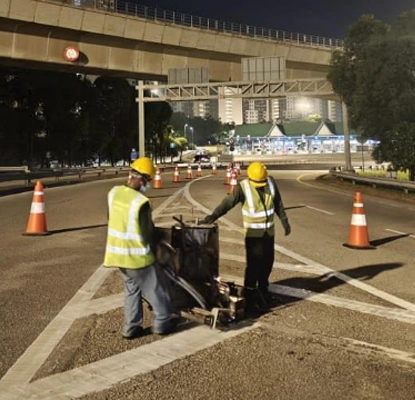
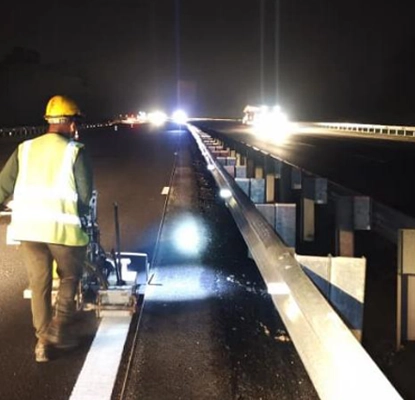
Normal thermoplastic road marking is a durable pavement marking made from a heat-sensitive thermoplastic material that becomes pliable when heated. This allows for efficient application to road surfaces, resulting in markings that are resistant to wear from traffic and weather. Typically incorporating glass beads for enhanced reflectivity, thermoplastic markings improve visibility, especially at night. Available in various colors for different traffic control purposes, they are known for their longevity and quick curing time, making them a popular choice for road safety and effective traffic management.
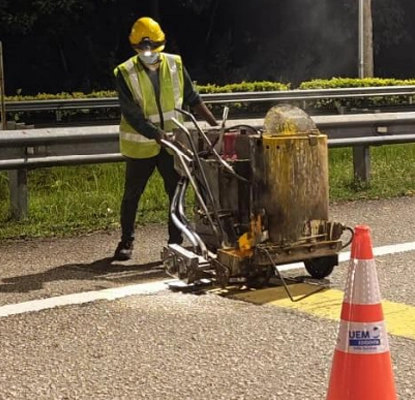
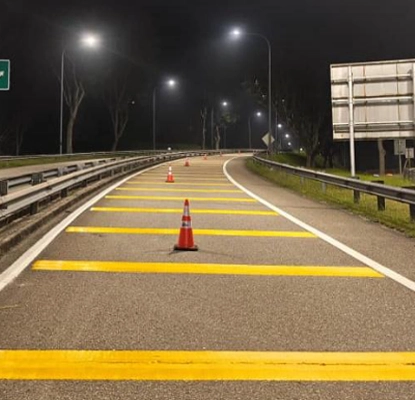
High-performance thermoplastics (HPT) are extremely durable materials that can survive heavy traffic, harsh weather and chemical exposure. This longevity ensures that road markings remain visible and intact over time, reducing the need for maintenance and replacement. They are resistant to fading, chipping, and wear, which reduces maintenance costs and improves road safety which guarantees a longer life service compared to traditional road markings. The retroreflective pigments and glass beads in the material enhances visibility, especially during lowlight conditions or at night. Moreover, HPT does not only have high visibility and durability but it also has higher skid resistance. Thermoplastic materials are versatile in design, allowing for the production of diverse symbols, patterns, and colors to transmit specific traffic information or warnings. The durability, lifespan, reflectivity, quick application, strong adhesion, environmental sustainability, and design flexibility, making them an excellent choice for marking roads and highways.
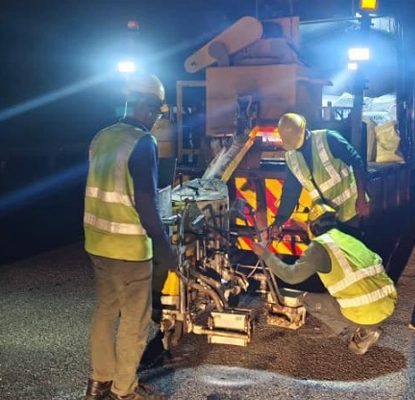
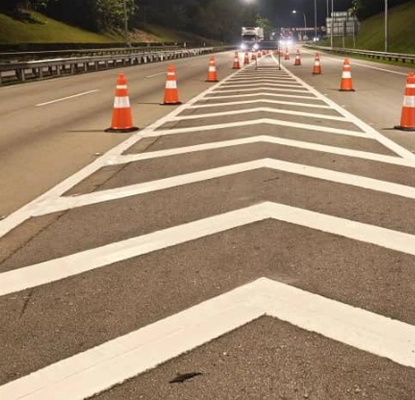
All-weather thermoplastics are a type of material that can survive a variety of environmental conditions, including high temperatures, UV radiation, wetness, and chemical exposure. Road thermoplastic markings are cost-effective solution for road agencies and municipalities due to their long-term durability and reduced maintenance requirements which results in cost savings over the lifespan of the markings. Thermoplastic road markings can be applied quickly, minimizing road closure time and disruption. More than just creating visuals, I delve deep into understanding the core values and aspirations of every brand I work with. They can be formulated to provide better traction, reducing the risk of skidding in wet conditions


Spray paint road marking is widely used for temporary or small-scale works due to its cost-effectiveness, quick application, and fast drying time. It is versatile, working on different surfaces and requiring minimal equipment, which helps reduce traffic disruption. These benefits make it ideal for short-term projects such as construction zones, diversions, or emergency works. However, it is less durable and less reflective compared to thermoplastic or epoxy, so it is not recommended for permanent applications on high-traffic roads.
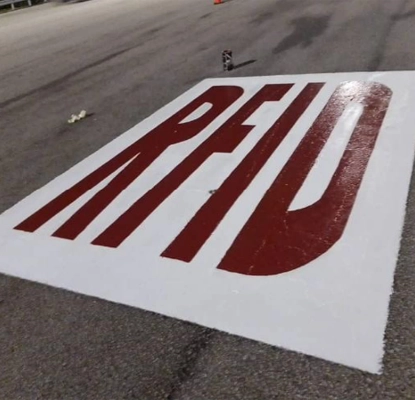
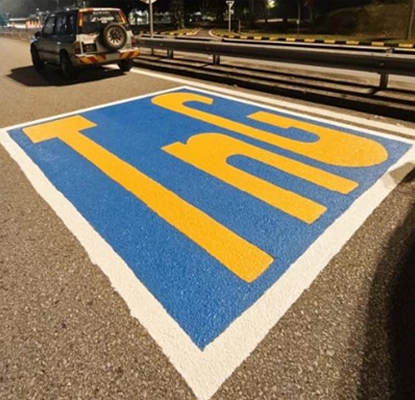
Coloured pavement markings enhance safety and functionality by improving visibility for drivers, cyclists, and pedestrians, thus reducing accidents. They provide clear guidance for traffic flow, designate specific lanes or zones, and can influence driver behaviour. These markings contribute to the aesthetics of urban spaces, promote parking management, signal maintenance needs, and encourage compliance with traffic regulations. To ensure the efficiency of color pavement markings, use high-quality, durable paint and follow application guidelines for optimal performance. Conduct regular maintenance to refresh markings and ensure clear design and placement according to regulations.
BRIDGE JOINT
We have different type of Bridge Joint
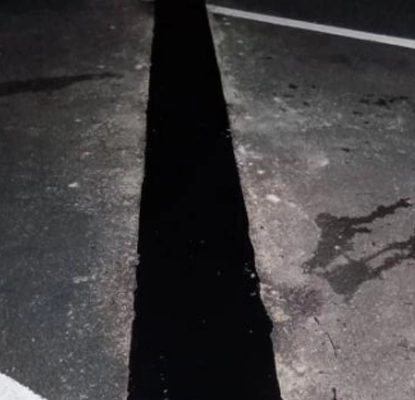
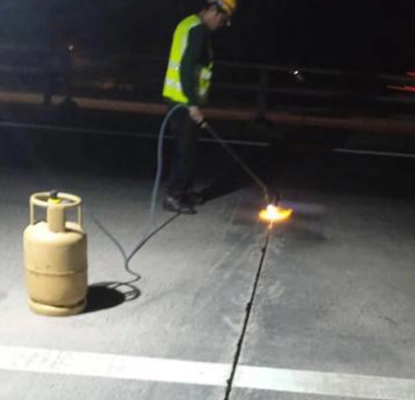
The use of rubber bridge expansion joint enhances the safety, functionality, and longevity of bridge structures, providing essential movement accommodation, sealing properties, and durability in diverse environmental and traffic conditions. Rubber expansion bridge joints are crucial for accommodating movement in bridge structures, primarily due to thermal expansion, contraction, and traffic loads. They allow for the natural movement of the bridge while maintaining a smooth transition between different sections, enhancing safety and comfort for vehicles. These joints help prevent water and debris infiltration, which can lead to corrosion and structural damage. Additionally, they reduce noise and vibration transmission, contributing to a quieter driving experience./p>


Asphaltic bridge expansion joints are designed to accommodate movement between bridge sections while providing a smooth transition and sealing the joint to prevent water and debris infiltration. Composed of flexible asphaltic materials, these joints effectively absorb thermal expansion, contraction, and traffic loads, helping to protect the bridge structure from damage. Their waterproofing properties prevent moisture from causing corrosion and deterioration, while the smooth driving surface enhances safety for vehicles. Additionally, they are relatively easy to install and offer a cost-effective solution compared to some metal or composite alternatives, making them an essential component for maintaining the integrity and longevity of bridge structures.


Sealant bridge expansion joints are designed to provide a flexible seal between bridge deck sections, allowing for movement while preventing water, debris, and contaminants from infiltrating the joint. Typically composed of elastomeric materials or specialized sealants, these joints accommodate thermal expansion and contraction, as well as movement caused by traffic loads. Key benefits include enhanced durability, as the sealant is resistant to weathering, UV rays, and various chemicals, ensuring long-lasting performance. Additionally, sealant joints help maintain a smooth driving surface, improving vehicle safety and comfort. Their relatively straightforward installation process makes them suitable for both new constructions and maintenance applications, playing a vital role in preserving the structural integrity of bridges.


A versatile and economic solution for road strengthening, Stabilised Wet Mix has mechanical characteristics equivalent to hot mixes and is suitable for reshaping and reinforcing flexible road surfaces. The material is manufactured by adding 5% bitumen emulsion to a tried and tested grading clause 810 wet mix macadam.
